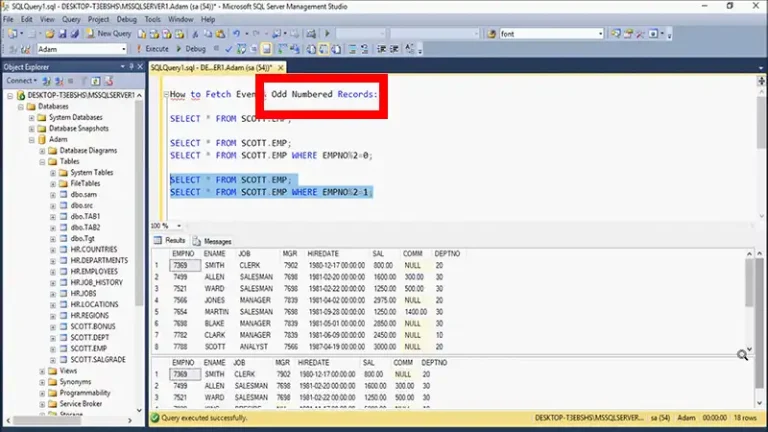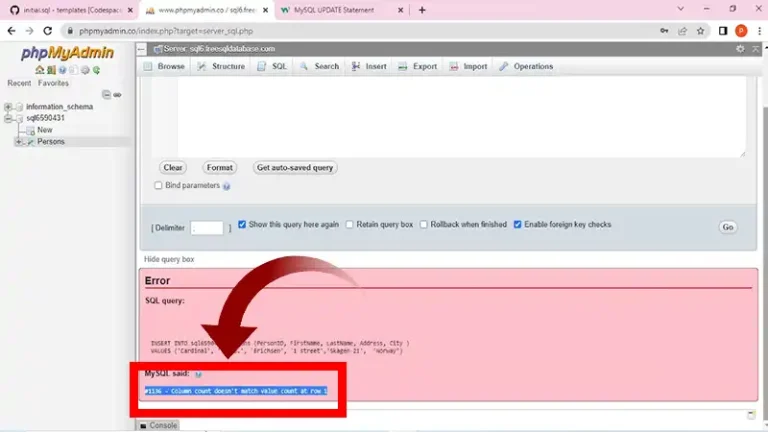Efficient SQL Insert If Not Exists
In SQL, inserting data into a table only if certain conditions are met, commonly referred to as “INSERT IF NOT EXISTS,” is a frequently encountered scenario. This operation ensures that duplicate records are not inserted into the database, maintaining data integrity. In this article, we’ll explore various methods to achieve an efficient “INSERT IF NOT EXISTS” operation in SQL.

Using INSERT IGNORE
One straightforward approach is to use the INSERT IGNORE statement, supported by many relational database management systems (RDBMS) like MySQL and MariaDB. This statement attempts to insert the specified data into the table. If a duplicate key violation occurs, it silently ignores the error and continues executing subsequent statements.
INSERT IGNORE INTO table_name (column1, column2, ...)
VALUES (value1, value2, ...);Using ON CONFLICT (PostgreSQL)
For PostgreSQL databases, the ON CONFLICT clause allows you to specify conflict resolution strategies when a unique constraint violation occurs during an insert operation. By combining ON CONFLICT with the DO NOTHING action, you can achieve an “INSERT IF NOT EXISTS” behavior.
INSERT INTO table_name (column1, column2, ...)
VALUES (value1, value2, ...)
ON CONFLICT (unique_column)
DO NOTHING;Using NOT EXISTS Subquery
Another common approach is to use a subquery with the NOT EXISTS condition to check if the record already exists in the table before performing the insert operation. This method provides more flexibility and is supported by various RDBMS.
INSERT INTO table_name (column1, column2, ...)
SELECT value1, value2, ...
WHERE NOT EXISTS (
SELECT 1 FROM table_name WHERE unique_column = 'some_value'
);Using MERGE Statement (Oracle)
For Oracle databases, the MERGE statement allows you to perform conditional insert, update, or delete operations based on a specified condition. By utilizing the MERGE statement with appropriate conditions, you can achieve an “INSERT IF NOT EXISTS” behavior efficiently.
MERGE INTO table_name dest
USING (SELECT 'some_value' AS unique_column FROM dual) src
ON (dest.unique_column = src.unique_column)
WHEN NOT MATCHED THEN
INSERT (column1, column2, ...)
VALUES (value1, value2, ...);Frequently Asked Questions
Which method should I use for “INSERT IF NOT EXISTS” operation in SQL?
The choice of method depends on the specific requirements of your application and the database management system you are using. INSERT IGNORE, ON CONFLICT, NOT EXISTS subquery, and MERGE statement are all viable options, so consider factors such as database compatibility, performance, and ease of implementation when selecting the appropriate method.
How can I handle errors or exceptions when using these methods?
When using any of these methods, it’s essential to handle potential errors or exceptions that may occur during the insert operation. Depending on the programming language or framework you are using, you can implement error handling mechanisms to gracefully handle such situations and provide feedback to the user or log errors for further analysis.
Can I use these methods for bulk inserts or batch operations?
Yes, these methods can be adapted for bulk inserts or batch operations by applying them to multiple records simultaneously. Whether inserting single records or batches of records, ensure that the chosen method aligns with your performance and scalability requirements.
Conclusion
In conclusion, implementing an efficient “INSERT IF NOT EXISTS” operation in SQL requires careful consideration of the database management system’s capabilities and syntax. Whether using INSERT IGNORE, ON CONFLICT, NOT EXISTS subquery, or MERGE statement, each method offers advantages and may be more suitable depending on the specific requirements and database platform used.






